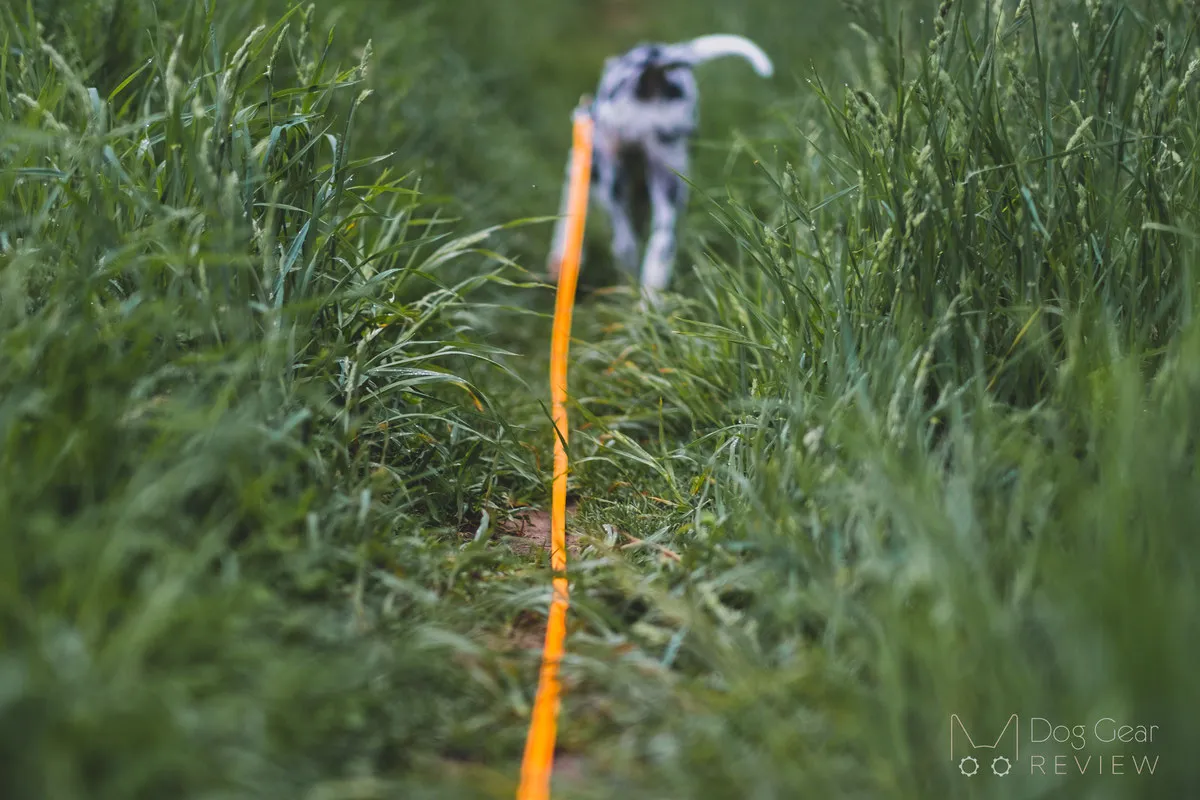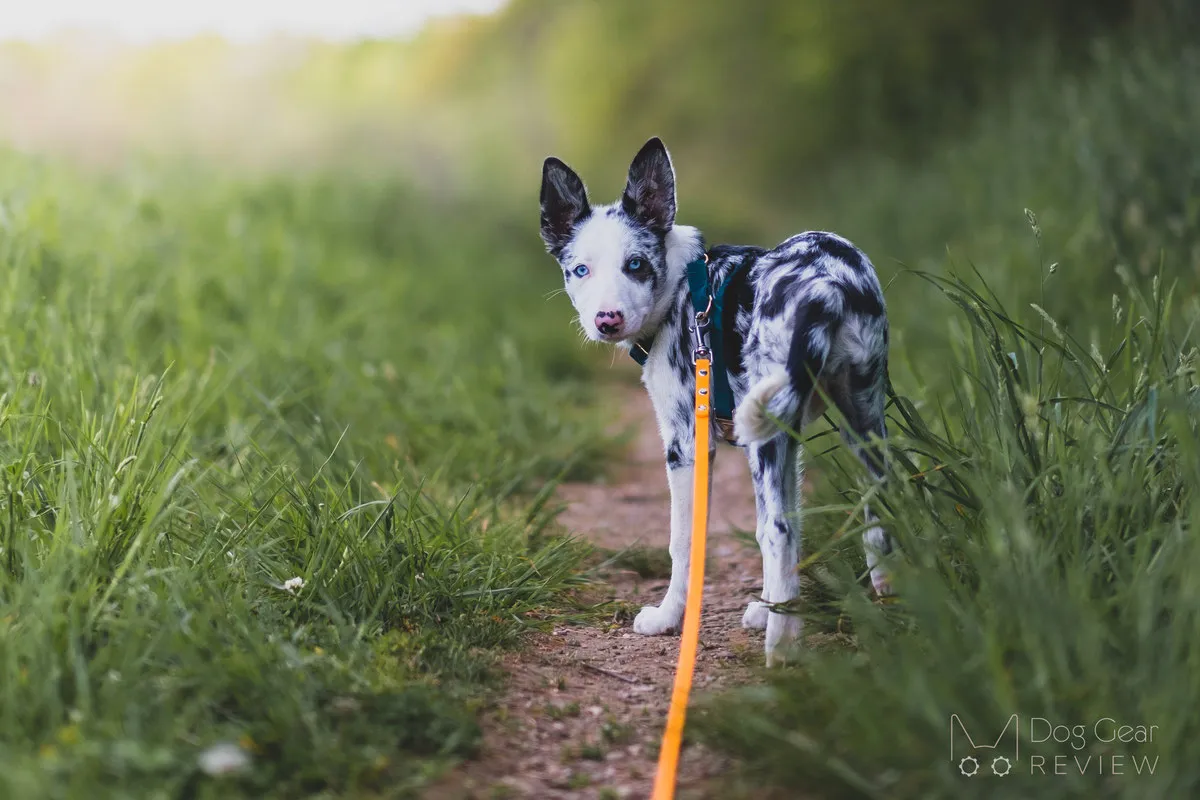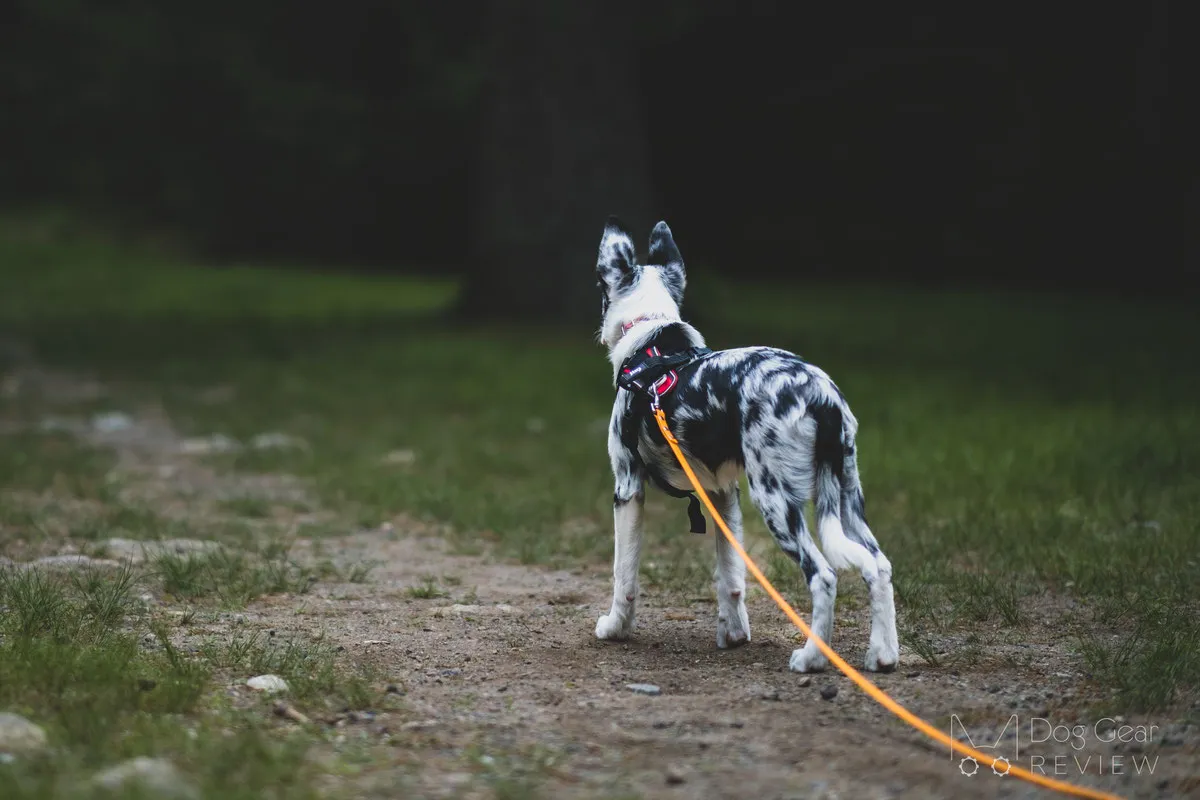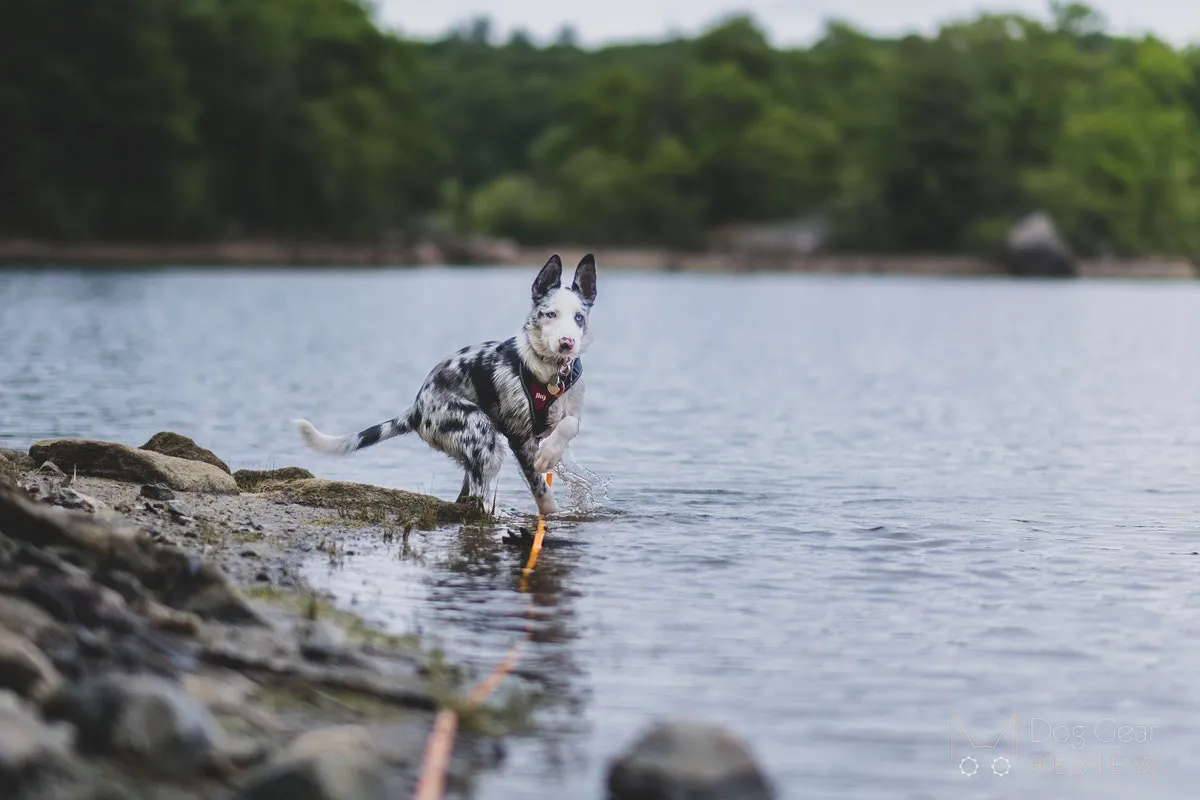As a dedicated dog parent, navigating the world of canine equipment can sometimes feel overwhelming. One tool that sparks frequent discussion and varied opinions among dog owners and trainers is the Long Leash. Whether you’re working on recall, giving your dog more freedom in open spaces, or simply exploring alternatives to traditional leashes, understanding the nuances of a long leash is crucial. My own journey with dogs like Mia, who had excellent recall, and Zulu, a more independent spirit who benefited greatly from a dragline in her early months, has highlighted both the incredible advantages and the often-overlooked risks associated with these versatile tools. long training leash for dogs can be incredibly beneficial for shaping your dog’s behavior and confidence.
This article aims to provide a thorough analysis of long leashes, exploring their various applications, the materials they’re made from, and crucially, the potential dangers and how to mitigate them. By understanding the different scenarios in which a long leash shines and when it might pose a risk, you can make an informed decision about its use, ensuring the safety and well-being of both your dog and yourself.
What is a Long Leash (Long Line) and Why Use One?
At its core, a long leash, often referred to as a long line or a training line, is simply an extended version of a standard dog leash. Unlike typical walking leashes that range from 4 to 6 feet, long leashes can vary significantly in length, commonly found in 10, 15, 20, 30, or even 50-foot options. They may or may not come with a handle, depending on their intended use.
The primary purpose of a long leash is to provide a dog with greater freedom to explore and move while maintaining a secure connection to the handler. This is particularly valuable for training, especially in recall or boundary setting, and for allowing dogs to sniff and roam in open, yet unenclosed, areas where off-leash freedom isn’t safe or permitted.
Long leashes are typically crafted from a few key materials, each with distinct advantages and disadvantages:
- Rope/Fabric: These materials are generally lightweight and flexible, making them comfortable to handle. However, they can pose a risk of “rope burn” if they rapidly slide through hands or get tangled around a person or dog when the dog runs. Fabric lines can also absorb water and dirt, becoming heavier and harder to clean, and strong ropes can be susceptible to damage from abrasive surfaces like sand.
- Biothane: This synthetic material has become increasingly popular for long leashes. Biothane is a coated webbing that offers exceptional durability, is waterproof, easy to clean, and resistant to odors. Its smooth surface also reduces the likelihood of rope burn compared to traditional ropes, and it holds up well against wear and tear from elements like mud and sand, making it an excellent choice for various outdoor environments.
 A dog on a long leash exploring an open field, illustrating the freedom and control offered by the training tool.
A dog on a long leash exploring an open field, illustrating the freedom and control offered by the training tool.
Long Leash vs. Retractable Leash: When to Use Which?
While both long leashes and retractable leashes offer extended reach for your dog, their functionality and safety profiles are vastly different. Some owners opt to use a long leash as an alternative to a retractable leash, holding the end and managing the slack manually.
Retractable leashes, or flexi leashes, store the excess lead within a handle, allowing the dog to roam a certain distance while the tension mechanism keeps the line taut. They prevent slack from pooling on the ground, which can be convenient in some situations. However, retractable leashes come with their own set of well-documented dangers, including sudden jolts to the dog’s neck, severe rope burns, and difficulty in regaining control quickly.
In contrast, using a long leash requires the handler to actively manage the length, gathering and releasing the slack as needed. This approach is generally safer as it provides a more direct and consistent connection to the dog, allowing for quicker reactions. However, it demands more attention and skill from the handler.
The optimal choice between a long leash and a retractable leash depends heavily on the environment, the dog’s temperament, and the handler’s leash skills:
- Open Fields: A long leash excels in open areas like parks, beaches, or hiking trails, providing dogs ample space to explore, sniff, and run without being fully off-leash. The handler can allow the dog to drag some of the line, or actively manage it to offer maximum freedom.
- Busy Urban Environments: Handling a long leash in a bustling city can be challenging. The significant slack can become a tripping hazard for pedestrians, tangle around obstacles, or make it difficult to quickly shorten the leash in congested situations. In such environments, a standard leash or a properly managed short-to-medium length long leash is often more practical.
- High-Energy vs. Calm Dogs: A calm dog might comfortably stroll on a long leash, dragging part of it. However, a high-energy dog with a tendency to dart or make sudden movements could lead to dangerous “whiplash” incidents if they hit the end of the leash while running at full speed, potentially injuring both the dog and the handler. For better control with spirited dogs, consider a double leash for large dogs to manage their exuberance, especially if you walk two dogs at once.
- Multiple Dogs: Managing multiple dogs on individual long leashes simultaneously can become a tangled mess. Retractable leashes, despite their drawbacks, allow for one-handed operation per dog, which can be simpler for multi-dog households in certain contexts. However, for training purposes, working with one dog at a time on a long leash is usually recommended.
 A person managing the slack of a long leash while their dog walks ahead in a grassy area, demonstrating active handling.
A person managing the slack of a long leash while their dog walks ahead in a grassy area, demonstrating active handling.
The Dragline Method: Off-Leash Training Aid
One of the most common and effective uses of a long leash is as a “dragline.” In this method, the leash is attached to the dog’s collar or harness and allowed to trail behind them on the ground, without the owner holding the other end.
Draglines are invaluable tools for dogs that are learning off-leash skills or those who do not yet have a consistently reliable recall. They provide a critical safety net, allowing the handler to quickly grab or step on the leash if the dog attempts to bolt, chases after wildlife, or ignores a recall cue. This helps prevent dogs from getting into dangerous situations while gradually building their confidence and responsiveness.
For dogs with a strong prey drive, a dragline can be a useful management tool in controlled environments. However, it’s essential to be realistic about the challenges. If a dog with high prey drive takes off suddenly, you might not be able to grab the dragline before they disappear into dense foliage or encounter a dangerous situation. They could also get tangled in dense undergrowth, potentially injuring themselves or becoming stuck. Therefore, using a dragline with a dog prone to bolting requires careful consideration of the environment and a strong understanding of your dog’s triggers.
Ideally, draglines are thin, lightweight, and often designed without a handle to minimize snagging and prevent them from adding excessive pressure or creating an unnatural gait for the dog. Regular leashes are generally not suited for dragline use as they are not built to withstand constant dragging through dirt, mud, and over rocks, leading to rapid fraying and damage.
 A dog dragging a lightweight long leash through a field, illustrating the dragline method for training and safety.
A dog dragging a lightweight long leash through a field, illustrating the dragline method for training and safety.
Understanding the Risks of Using a Dragline
While draglines are excellent training tools, their use is not without risks. It’s crucial for owners to be aware of these potential dangers to make informed decisions and implement strategies to minimize harm. Overlooking these risks can lead to adverse effects, both in the short and long term.
Tangling Hazards
One of the most immediate and frequently encountered issues with long leashes and draglines is the risk of tangling. Even wider Biothane lines, which are smoother than rope, can still cause abrasions or “rope burn” if they swiftly rub against skin. This is particularly concerning when a dog on a long line rushes past, or if it zigzags unpredictably around people or other dogs on a trail.
More severely, a dragline can get tangled around another dog during play, or wrap tightly around a dog’s leg or torso. When dogs are running or playing vigorously, such tangles can lead to severe injuries, including sprains, fractures, or deep cuts, as the leash suddenly jerks or tightens.
Water-based activities present another unique set of tangling hazards. Using a dragline while swimming, kayaking, or paddleboarding can be extremely dangerous. If the line gets snagged on an underwater object, it can trap the dog, potentially leading to drowning, especially in fast-moving currents or if the dog is not wearing a life vest. For aquatic adventures, a short, buoyant safety line or no line at all might be preferable, and always ensure your dog has a proper life vest.
 A dog running through tall grass with a long leash trailing, emphasizing the potential for tangles in natural environments.
A dog running through tall grass with a long leash trailing, emphasizing the potential for tangles in natural environments.
Collar Attachment Concerns
Attaching a long leash or dragline directly to a dog’s collar, especially a flat buckle collar, carries significant risks. If the dog suddenly hits the end of the line—whether it’s held by the handler, gets caught on an obstacle, or is stepped on—the abrupt jolt can cause serious injury to the dog’s neck. This can range from tracheal damage to whiplash or even more severe spinal injuries, particularly in puppies with developing joints or dogs with pre-existing neck issues.
Another subtle but important concern with collar attachment is the way the dragline interacts with the dog’s natural movement. As the line trails behind the dog, it will often go underneath their body. To avoid stepping on it, many dogs learn to subtly “spread out” their legs or adopt an altered gait, walking at an unusual angle. While this might seem minor, prolonged periods of an unnatural gait can lead to discomfort, strain on muscles and joints, and potentially developmental problems in young puppies whose skeletal systems are still maturing. Ensuring your dog’s comfort and proper posture is paramount, which is why some owners consider an invisible dog fence for contained off-leash freedom, though this has its own considerations.
Harness Attachment Challenges
Using a dragline attached to a harness can protect the dog’s neck from sudden impacts, but it introduces its own set of challenges. Many soft, Y-front style harnesses are designed for general walking and can rotate or shift to one side when a dragline is attached to the back clip. This gravitational pull often causes the chest strap, located between the front legs, to press uncomfortably against one of the dog’s legs.
While some dogs may not be bothered by slight pressure, others, like my Zulu, can develop significant changes in gait, walking sideways or even hopping to avoid the chafing or awkward feeling of a displaced harness. This unnatural movement can lead to skin irritation, discomfort, and long-term musculoskeletal issues. It’s crucial to ensure your dog’s harness fits correctly and does not restrict their natural movement; you can learn more about green dog collar and leash options that also emphasize comfort.
Harnesses with a more rigid structure around the neck and back, or those specifically designed for activities like canicross or pulling, tend to stay in place better with a long line. Examples include specific models from Musher Freespirit, Non-stop Dogwear Line Harness, and CTC Dog Gear Shoulder Harness. Additionally, some harnesses feature a leash attachment point under the rib cage, which can help prevent harness rotation and minimize disruption to the dog’s movement when a dragline is used. Proper fit is always key, as even the best harness can cause issues if it’s ill-fitting. For robust options, consider a heavy duty retractable dog leash for large dogs which may also come with suitable harness attachments.
Balancing Safety and Utility: Best Practices for Long Leashes
Draglines and long leashes are undoubtedly powerful tools for dog training and providing freedom, but their effective and safe use requires careful consideration and conscious effort. The goal should always be to maximize their benefits while minimizing the inherent risks.
Ideally, draglines should be paired with ongoing training to gradually improve your dog’s recall and off-leash reliability, allowing you to eventually phase out their constant use. However, there will always be situations where a dragline remains genuinely needed, such as in new environments, for dogs with strong prey drives, or during specific training exercises.
When deciding to use a long leash or dragline, it’s essential to:
- Assess the Environment: Choose open, less crowded areas free from excessive tangling hazards like dense bushes, fences, or fast-moving water with potential underwater snags.
- Select the Right Gear: Opt for lightweight Biothane lines without handles for dragline use. If attaching to a harness, ensure it’s a well-fitting, secure harness that won’t rotate or cause discomfort. Avoid attaching draglines to collars unless absolutely necessary and with extreme caution.
- Supervise Actively: Always maintain constant vigilance. Be ready to grab or step on the line, and watch for potential tangles or hazards for your dog and others.
- Educate Yourself: Understand your dog’s body language and their tendencies. Know when they might be about to chase or get into trouble, and intervene proactively.
By making a conscious decision based on the risks and taking proactive steps to ensure safety, a long leash can be an incredibly valuable and enriching tool for both you and your canine companion.
Conclusion
The long leash, whether utilized as an extended walking leash or a dragline for off-leash training, offers immense potential for enhancing a dog’s freedom, improving recall, and deepening the bond between pet and owner. From the durable, easy-to-clean qualities of Biothane to the strategic benefits of the dragline method, these tools can be game-changers in responsible dog ownership. However, like any powerful tool, understanding its limitations and inherent risks is paramount. Issues such as tangling, potential neck injuries from collar attachments, and gait disruption from ill-fitting harnesses are serious considerations that demand our attention.
By making informed choices about materials, attachment points, and environmental suitability, and by actively engaging in safe handling practices, we can harness the benefits of the long leash while mitigating its dangers. The journey of dog ownership is one of continuous learning and adaptation. We encourage you to further explore our extensive resources on dog care and training to ensure your furry friend lives their happiest, healthiest life.
